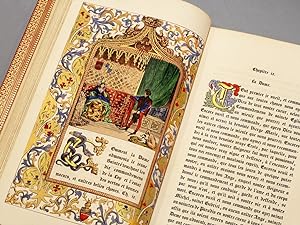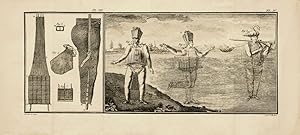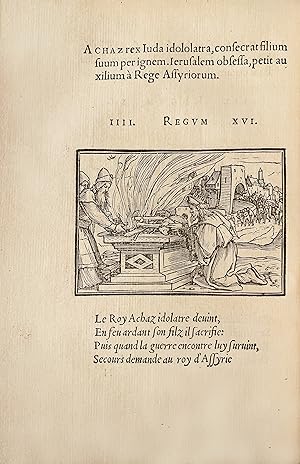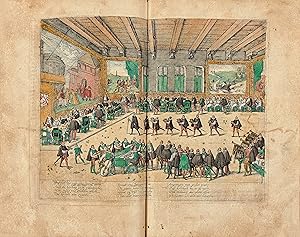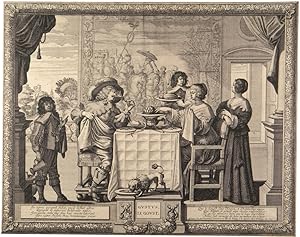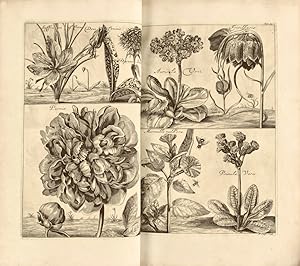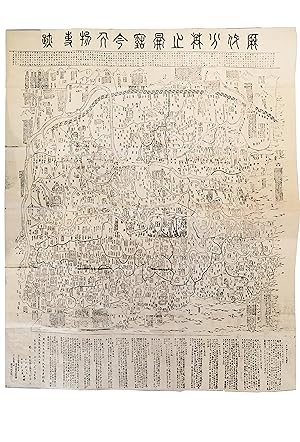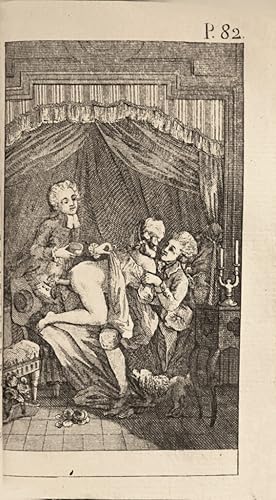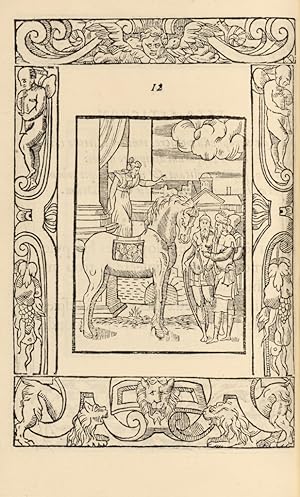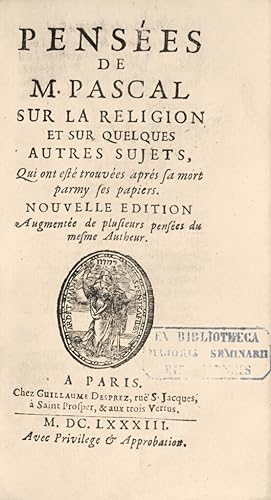Librairie Camille Sourget (635 résultats)
Type d'article
- Tous les types d'articles
- Livres (635)
- Magazines & Périodiques
- Bandes dessinées
- Partitions de musique
- Art, Affiches et Gravures
- Photographies
- Cartes
-
Manuscrits &
Papiers anciens
Etat
- Tous
- Neuf
- Ancien ou d'occasion
Reliure
Particularités
- Edition originale
- Signé
- Jaquette (3)
- Avec images (629)
- Sans impression à la demande
Pays
Evaluation du vendeur
-
Le Navigationi et Viaggi, fatti nella Turchia, di Nicolo de Nicolai del Delfinato, signor d Arfevilla, Cameriere & Geografo ordinario del Re di Francia, con diverse singolarità viste, & osservate in quelle parti dall Autore. Novamente tradotto di Francese in Italiano da Francesco Flori da Lilla, Aritmetico
Edité par Venice, Francesco Ziletti, 1580., 1580
Couverture rigide. Etat : Très bon. Venice, Francesco Ziletti, 1580. Folio of (8) ll., (4) ll., 192 pp. illustrated with 67 full-page copper-engravings. Small, partially faded wetstamp on the title, tiny tear in margin of title, restored tear at corner of pp. 53, 137, 139, 185 and margin of p. 183, small ink stain on p. 110. Red calf, double fillet around the covers, ribbed spine, gilt title, inner gilt border. Modern binding. 303 x 202 mm. First Italian edition in folio format, partly original, containing seven more full-page engravings of oriental costumes than the previous editions. For this reason and for its format, this edition, which has become rare, is one of the most sought-after. It is also the first edition to feature copper engravings to illustrate the text, much finer and more detailed than the woodcuts used in previous editions. Brunet, IV, 67 ; Adams n°253 ; Cicognara 1731 ; Colas 2204 ; Mortimer, II, 319. Rare Venetian edition, partly original, containing 7 more engravings than the French edition of 1568 . The first edition was published in Lyons in 1567. This Venetian edition features 67 full-page copper-engravings, 7 more than the French edition of 1568. These superb engravings are an invaluable source of information on the peoples of the 16th-century Ottoman Empire. These additional engravings are listed below: 1 plate paginated 154 without caption depicting 3 figures. 1 plate, paged 182: Capitano d Arabie. 1 paged plate 184: Donna turca standi in casa 1 paged plate 186: Sposa di Constantinopoli 1 paged plate 188 : Patriarca di Costantinopoli 1 paged plate 190 : Calidesquer a piedi 1 paged plate 192 without caption with 4 women s costumes . (Colas, 2204) Nicolas de Nicolay was born in La Grave d Oisans (Isère) in 1517 and died in Paris in 1583. After taking part in the siege of Perpignan (1542), he travelled most of Europe, serving in the armies of most of the countries he visited, studying the languages he heard spoken and taking sketches, of which he formed a collection. Returning to France after sixteen years, he became valet and geographer to Henry II. In 1551, he accompanied the Aramon ambassador to Constantinople, then visited the Greek archipelago, the northern coasts of Africa and became artillery commissioner. Commenting on the 1567 edition, Colas writes: These engravings depict male and female costumes from Turkey, Arabia and Greece; this is the first series of serious documents on the clothing of the Near East, and was copied by most 16th-century dress designers; these engravings are attributed to Louis Danet by most bibliographers, 42 of whom bear the monogram L. D. However, the Cabinet des Estampes copy bears a handwritten note stating that these plates were engraved by Léonard Thiry dit Léonard Daven, and the Destailleur sale catalog (1893, no. 1325) confirms the latter attribution. Neither Bartsch nor Passavant mention this suite in Thiry s work. After describing the customs of Algiers, Tripoli, Barbary and Scio, where he landed on his way to Constantinople, Nicolay (1517-1583), a traveler from the Dauphiné region, dwells longer on the Turks, Greeks and other inhabitants of the Ottoman Empire. His remarks are instructive for the time in which they appeared, and even offer some curious details. But Nicolay suddenly interrupts his report at the end of the third book; he speaks of the inhabitants of Persia and Arabia, countries he did not visit, and to fill in his text, as well as what concerns the Greeks, Armenians and Jews, he has recourse to ancient and modern authors who have written about these peoples and the countries they inhabit. A copy with wide margins, bearing the ex libris Gonnelli Firenze 1875 .
N° de réf. du vendeur LCS-18445
-
La Camille de Pierre Boton, Masconnois. Ensemble les resveries & discours d un Amant désespéré.
Edité par A Paris, par Jean Ruelle,1573., 1573
Couverture rigide. Etat : Très bon. A Paris, par Jean Ruelle,1573. 8vo of (8) ll., 63, (1) l., title in a woodcut framing. Clear stain p. 37, l. 53 cut short and atteining the headline. Blond glazed calf, triple gilt fillet around the covers, spine ribbed and decorated with gilt fillets, lettering pieces in black morocco, gilt edges. Binding from the beginning of the 19th century. 153 x 96 mm. Unique first edition, perfectly preserved, of this novelistic and poetic collection of the utmost rarity. The most recent judgment and one of the most authorized, that of Marcel Raymond, places Pierre BOTON (1555-1618) among the best poets of the French province of his time. This work attests of the great vivacity of poets of province, at the end of Charles IX s reign. Born in Mâcon around 1555, lawyer in this city and partisan of the League at the end of the wars of religion, he was a deputy for the Duke of Mayenne, then in Dijon, in July 1587. After the abjuration of Henry IV he passed to the royal party and was appointed President in the election of Mâcon. He served, upon this title, on the states of Mâconnais and was delegated by those to the states of Burgundy from 1599 to 1622. He died at 63 (P. Vauxelles, Dictionnaire de biographie française. The previous biographies mention him dead in 1598, which is the date of hist last known work). Viollet-le-Duc, first of all, timidly began to emphasize Pierre Boton s Camille (in his Bibliothèque poétique , 1843), despite the opinion of his predecessors. We have no information on Pierre Boton other than that which he gives of himself in his poems; that is, he was very young when he composed them, notwithstanding the advice he received from all quarters to devote himself to more fruitful work. This advice, impotent as always, aroused his anger, which he bitterly exhales in a prose epistle addressed to the reader, as appears to have been the custom at the time, following the example of Etienne Forcadel; but Boton is more violent [ ] Unfortunately, we have no newspapers from this period, and I am unable to ascertain the effect this epistle had on the minds of the critics of the time; but biographers, and in particular Abbé Goujet, severely reproach Boton for his haughtiness and airs of contempt, which, they add, suit him less than anyone else ; which I deny, without approving Boton s insults; but certainly his talent, and he has it, is not inferior to that of most of his contemporaries . The judgment given by Bishop Goujet ( Bibliothèque françoise , 1740-1756) on the Camille, and on Pierre Boton, was conditioned by moral considerations, and the annoyance that could have produced on this austere Jansenist priest from the 18th century, the violent Epitre au lecteur of a young and fiery poet decided to make himself known, despite the advices of caution formulated by his entourage. By the specialists admission, the work is permeated by a fervour, a conviction and a remarkable authenticity that make all of its charm. Copy in perfect condition, preserved in its elegant blond glazed calf binding. Bibliography: Barbier, Ma bibliothèque poétique, 4th part, tome I, Geneva, 1998; Brunet, I, 1143; Suppl., I, 157; Raymond, L Influence de Ronsard sur la poésie française, P., 1927, Geneva, 1993; Viollet-le-Duc, Catalogue des livres composant la bibliothèque poétique de M. Viollet Le Duc Paris, 1843; cat. Herpin, n°168, very rare collection.
N° de réf. du vendeur LCS-18443
-
Recueil de monumens des catastrophes que le globe de la terre a essuiées, contenant des pétrifications et d autres pierres curieuses, dessinées, gravées et enluminées d après les originaux, avec leur description par George Wolfgang Knorr.
Edité par Nuremberg, [1768-1778]., 1768
Couverture rigide. Etat : Très bon. Nuremberg, [1768-1778]. 3 folio volumes [410 x 259 mm] of: I/ 1 portrait, (3) ll., 59 pp., 1 engraved title, 127 plates including 10 on double page ; II/ (3) ll., 159 pp., 78 plates including 3 on double-page ; III/ pp. 1 to 172, 68 plates including 2 on double-page. Full red morocco, covers decorated with a large rocaille dentelle, spines ribbed and decorated with a rich gilt grotesque decoration, inner gilt border, gilt edges. Contemporary dentelle binding. First French edition more sought after than the first German edition . (Brunet) Brunet, III, 682; Nissen 2232; BMC (NH), II 998. Unique Presentation copy on large paper with a special title sumptuously bound in red Parisian morocco with large rocaille dentelle and with the spines decorated with a superb grotesque gilt decor, illustrated with an aquatint portrait of Walch after J. Elias Haid, 273 engravings, 15 of which on double page, printed in color and enhanced by hand, in contemporary binding without part IV and the text of part III, as often (Graesse: The second part of the third volume, containing the table, is often missing ). Knorr, a German engraver, was born in Nuremberg on December 30, 1705. He first learned the trade of a turner, which he did until the age of eighteen. But he also took up engraving. He even cultivated painting, and painted some landscapes. Later, reading books on natural history gave him a taste for this science, to which he mainly devoted his talent. A splendid set of this French edition, « plus généralement recherchée que l originale » (Brunet) of an outstanding scientific work on fossils. The plates include the d-p. plate of the famous Solenhofen quarries. A very attractive work; the plates in superb condition.
N° de réf. du vendeur LCS-18441
-
Thaïs. / Le Miracle de la Pie.
Edité par Paris, Librairie des Amateurs, A. Ferroud. A. Ferroud Successeurs, 1909-1921., 1909
Couverture rigide. Etat : Très bon. 1- France, Anatole. Thaïs. Quinze compositions dont un frontispice en couleurs par Georges Rochegrosse gravées à l eau-forte par E. Decisy. Paris, Librairie des Amateurs, A. Ferroud. A. Ferroud Successeurs, 1909. In-4 de 1 frontispice en couleurs, (2) ff. de faux-titre, justification et titre, 229 pp. de texte, (1) p. bl., (1) f. de table des illustrations. Relié en demi-maroquin bleu à coins, dos à nerfs orné de nénuphars mosaïqués, filet doré en bordure du cuir, tête dorée, tranches ébarbées, couvertures et dos conservés. Reliure signée René Aussourd. 233 x 153 mm « Édition recherchée et cotée, surtout en grand papier. » Carteret IV, p. 171. Exemplaire sur vélin d Arches, fabriqué spécialement, contenant les eaux-fortes dans le texte. Numéroté 944 avec paraphe de l éditeur « F. F. ». Publié pour la première fois dans la Revue des Deux Mondes en 1899, ce roman est finement illustré dans l édition de Ferroud par le peintre et illustrateur Georges-Antoine Rochegrosse (1859-1938) qui orna notamment les uvres des auteurs et poètes de son cénacle comme Gustave Flaubert ou Victor Hugo. Thaïs est orné de 15 compositions gravées à l eau-forte dont un frontispice vibrant par sa gamme chromatique complémentaire d oranges et de mauves. Après un exil monacal par repentance en regard d une jeunesse licencieuse, l abbé Paphnuce se donne pour mission de sauver l âme de la jeune courtisane Thaïs, mais cette quête ne fera que replonger l abbé dans de lointain tourments. Plaisante reliure art déco signée de René Aussourd (1884-1966), neveu de Charles Meunier, au dos finement mosaïqué de nénuphars. 2-France, Anatole. Le Miracle de la Pie. Paris, Librairie des Amateurs, A. Ferroud. A. Ferroud Successeurs, 1921. In-8, 1 frontispice en couleurs (2) ff. de faux-titre, justification et titre, 46 pp. de texte, (1) f. d achevé d imprimé. Relié en demi-maroquin rouge à coins, dos à nerfs orné de motifs floraux mosaïqués, filet à froid en bordure du cuir, tête dorée, tranches ébarbées, couvertures et dos conservés. Reliure signée Pinardon. 181 x 119 mm. Exemplaire sur beau vélin teinté d Arches, avec les illustrations en couleurs dans le texte. Numéroté 394 avec le paraphe de l éditeur « F. F. ». Parue en 1908 dans les Contes de Jacques Tournebroche, cette nouvelle d Anatole France relate la vie de Florent Guillaume, un écrivain dans la disette ayant trouvé refuge dans un clocher auprès d une pie dénommée Isabeau. Le texte est présentement orné d un ensemble de 16 compositions en couleurs dont 4 à pleine page par le peintre, illustrateur et lithographe Maurice Lalau. Cette nouvelle témoigne du style d Anatole France dont Paul Valéry soulignait « l aisance, la clarté, la simplicité ». Sa connaissance de l histoire et son scepticisme à l égard de la nature humaine rejaillissent au travers de l histoire du miséreux protagoniste. Exemplaire en reliure signée par Pinardon au dos finement orné de motifs floraux mosaïqués.
N° de réf. du vendeur LCS-18439
-
uvres de Louise Charly dite Labé surnommée la belle cordière.
Edité par Lyon, chez les frères Duplain, 1762., 1762
Couverture rigide. Etat : Très bon. Lyon, chez les frères Duplain, 1762. Small 8vo, 1 engraved frontispiece, xxxii pp., 212 pp., full straight-grained red morocco, gilt border around the covers, decorated flat spine, inner border, gilt edges. Old binding. 150 x 93 mm. Last old edition of the Works of Louise Labé, the first after more than two centuries of editorial silence, printed in a edition of 525 copies by Lyon bibliophile Pierre Adamoli at Aimé de La Roche from a copy of the original 1555 edition. Brunet, Manuel du libraire, III, 709. Around 1550, a bourgeois woman from Lyon, wife and daughter of artisan cordiers, not only claimed the right to write, but also succeeded in getting herself published, during her lifetime, by one of the most famous printers of her time. La Belle Cordière (c. 1520-1566) had her Works published in 1555 by Jean de Tournes in what was then the cultural capital of the French kingdom. Italy had led the way in recognizing the talents of Petrarch s brilliant imitators: great aristocrats like Vittoria Colona and Veronica Gambara, or upper-middle-class ladies like Gaspara Stampa and Tullia d Aragona. In France, the tradition of the cortegiana onesta was not firmly established. When a woman of modest means dared to step out of her silence to make herself heard publicly, voices were raised to reprove behavior deemed indecent, according to the moral and social standards of the time. In the case of the Lyonnaise Sappho , censors did react, but on closer inspection, they were few and relatively discreet. Calvin certainly alluded to the author s allegedly scandalous morals (he called her a common prostitute: plebeia meretrix), but he was hardly followed. Malicious poems circulated, including the venomous ode of a disappointed lover. But as early as 1555, François de Billon begged his detractors not to take seriously those who, out of envious malice , denigrated a woman they had never been able to equal. In fact, as the history of the immediate reception attests, the new collection was to arouse almost universal enthusiasm, so much so that some twenty well-known writers agreed to insert a collective tribute to the glory of their young colleague in the 1555 collection ( Escriz de divers poëtes à la louenge de Louize Labé Lyonnoize , Ed. Rigolot, p. 142 sq.). Precious copy of this very rare edition, printed in only 525 copies, preserved in its old red morocco binding. From the library Pierre de St Victor with ex libris.
N° de réf. du vendeur LCS-18438
-
Histoire de Saint Louis. Les Annales de son règne, par Guillaume de Nangis. Sa vie et ses miracles, par le Confesseur de la Reine Marguerite. Le tout publié d après les Manuscrits de la Bibliothèque du Roi, & accompagné d un Glossaire.
Edité par Paris, Imprimerie Royale, 1761., 1761
Couverture rigide. Etat : Très bon. Paris, Imprimerie Royale, 1761. Folio, 1 title-page, xxii-558 pp., clvvviii pages, 2 folding maps. Full light-brown marbled calf, triple gilt fillet around the covers, arms of King Louis XV gilt-stamped on the covers, spine ribbed bearing the crowned cipher of the king repeated in the five panels, as well as stars and fleurs-de-lys, inner border, marbled edges. Royal binding from the time. 400 x 253 mm. First edition based on a manuscript by Joinville acquired by King Louis XV, coming from the library taken in Brussels by Maurice de Saxe. It gives Joinville s original text with a minimum of alterations. The language has retained all its robust naivety. This edition, printed on laid paper, is illustrated with a fleuron on the title, engraved by Lemire, 3 vignettes by Eisen and Gravelot, 3 tail-pieces by Gravelot, engraved by Lemire and Sornique, 3 engraved letters and 2 folding maps by d Anville. Jean de Joinville (1224-1317), squire to the Count of Champagne, seneschal of Champagne, crusader in 1248 in the wake of Louis IX, took part in the capture of Damietta (1249) and the battle of Mansourah (1250); taken prisoner with the king, sick, released and repatriated to Saint-Jean-D acre (1250), he prolonged his stay in the Holy Land with Louis IX (1251-1254), who took him into his service and made him his confidant, admirer and advisor. His Memoirs were written between November 1, 1305 and April 30, 1306, at the request of Queen Jeanne de Navarre. The narrative begins shortly before the seventh crusade and ends sixteen years later, with the expedition itself occupying two-thirds of the book. This book of history and documentary literature, which relates, with the talent of a painter, what Joinville knows from personal experience, is also a work of edification with a didactic purpose. Louis IX embodies the values of the good Christian, the strong and just king, the valiant and courteous knight; he illustrates a model to be meditated on, by giving a number of lessons, the most important of which, addressed to the princes, consists in deserving his social superiority. The first example of testimonial literature: this work, which brings to life the man as much as the king and the saint, is the work of an eyewitness who ended up writing his autobiography; Joinville put himself into his account, where he stands out in full light. (« Beautiful edition », Brunet, III-556-557 Jean Dufournet, En Français dans le texte , n°24 Hauser, Les Sources de l histoire de France , III, 2537 Quérard, La France littéraire , IV, 230 Cohen, 518-519 Tchemerzine, III, 779). A beautiful copy preserved in its binding from the time bearing the arms and cipher of the King.
N° de réf. du vendeur LCS-18437
-
Le Roman du Renart publié d après les Manuscrits de la Bibliothèque du Roi des XIIIe, XIVe et XVe siècles.
Edité par Paris, chez Treuttel et Würtz, 1826., 1826
Couverture rigide. Etat : Très bon. Paris, chez Treuttel et Würtz, 1826. 4 parts in 4 volumes 8vo of : I/ 1 engraved frontispiece, xx pp., 404 pp.; II/ 1 frontispiece, (4) pp., 422 pp., (1) l.; III/ 1 engraved frontispiece, (2) ll., 439 pp.; IV/ 1 frontispiece, (2) ll., 536 pp. Some scattered foxing, more pronounced at the beginning and end of volumes. Light-brown quarter-calf, spines ribbed decorated with grotesques, lettering pieces in red and black morocco, top edge gilt, untrimmed. Binding signed by Petit. 217 x 133 mm. One very remarkable thing about this novel is that it has been translated and printed in several languages, but until now it had never been published in its original language . Vicaire, VI, Manuel de l amateur de livres du XIXème, 1180. The Roman de Renart is a famous allegorical and satirical poem from the Middle Ages. The heroes are Renart or Goupil (the fox) and Isengrin or Ysengrin (the wolf), personifying cunning and strength. Around them moves a whole world, which is the image of the feudal world with its hierarchy, castes, prejudices, mores and laws. A bibliophile and curator at the Bibliothèque royale, D.- M. Méon (1749-1829) had already published editions of a number of the great texts of medieval French literature, including the Roman de la Rose (1814). The Roman de Renart is the French version of a widespread medieval cycle of stories originating in Lorraine and known in English as Reynard the Fox. The earliest treatments in French are attributed to Pierre de Saint-Cloud in the late 12th century. Dominique Martin Méon, born September 1, 1748 in Saint-Nicolas-de-Port and died in Paris on May 5, 1829, was a French librarian, bibliophile, romanist and medievalist. During the French Revolution, he worked for the Ministry of War, providing supplies to the armies; he lost this job at the end of 1799; at the end of 1803, he sold the remarkable collection of books he had built up. From 1807 to 1826, he was assistant curator in the manuscript department of the National Library in Paris, where, around 1820, he organized the Latin Supplement collection of Latin manuscripts acquired from 1744 onwards. He is the scientific editor of French texts from the Middle Ages. He is particularly well known for his philological contribution to the 1824 edition of the French National Library s French manuscript n°1116, known as F , of the Book of Marco Polo, a publication of great historical importance, as it was the first edition of a manuscript of Marco Polo s famous account. Each volume opens with a fine engraved frontispiece signed Desenne and Ashby. Precious copy from the first printing in French of this famous poem from the Middle ages.
N° de réf. du vendeur LCS-18436
-
Couverture rigide. Etat : Très bon. Paris, Hachette et Cie, 1864. 12mo of (6) pp., 406 pp. including 28 full-pages plates, (2), usual foxing. Red half-buckram, flat spine, mottled edges. Contemporary binding. 178 x 112 mm. First edition of the utmost rarity of this famous novel by the comtesse de Segur. François de Nancé, a 10-year-old boy, has become hunchbacked as a result of a fall. He becomes a friend of the 6-year-old Christine des Ormes. The latter is neglected by her parents a whimsical, cold and scatterbrained mother, a loving father under the thumb of his wife and tormented by her maid. Christine and François, who both have excellent hearts, soon become inseparable. When the Ormes family decides to leave the countryside and move to Paris, Christine is happily entrusted to the care of M. de Nancé, where she finds the affection she has been missing. This situation lasted until the young girl turned 16, when she had to leave her adoptive family for a while. François left to study in the south-west of France, and she was placed in a convent, then taken in by her aunt, Mrs de Cémiane. Christine and François, cured of his infirmity thanks to an operation, met up again two years later, without Christine having been informed of this success or of the change! They got married and lived a happy and peaceful life with their father, Mr. de Nancé. It is often considered to be one of the Countess s darkest novels. Many dramatic events punctuate the narrative, which many adults consider too harsh for young readers: the fate of young Maurice, François s persecutor, is so horrible that the publisher asked the author to change it, but in vain. The novel was, however, to be called La Mauvaise Mère, in reference to Christine s mother, but this time the publisher won the case. Like many of the Countess novels, this one is devoted to a critique of education, contrasting children who are too spoiled, neglected or mistreated with children who grow up in an environment that knows how to balance affection and firmness. The countess of Segur takes up a theme dear to humanists: appearance is nothing. The illustration comprises 28 full-page plates and numerous vignettes inside the text by E. Bayard. A precious copy of this unobtainable first edition, preserved in its contemporary binding. Only one copy located among French public Institutions: at the B.n.F.
N° de réf. du vendeur LCS-18435
-
Voyage au Brésil ; où l on trouve la description du pays, de ses productions, de ses habitans, et de la ville et des provinces de San-Salvadore et Porto-Seguro. Avec une Table correcte des latitudes et longitudes des ports de la côte du Brésil, ainsi qu un Tableau du change, etc. Traduit de l anglais par François Soulès.
Edité par Paris, Léopold, Collin, 1806., 1806
Couverture rigide. Etat : Très bon. Paris, Léopold, Collin, 1806. 8vo of xiv pp., 215 pp., (1) p. Red morocco cardboard, large set of gilt borders around the covers, mention in gilt letters: A S.A.S Monseigneur le Prince Cambacéres Archichancelier de l Empire, flat spine decorated with gilt fillets and flowers with gilt stars and dotted lines, gilt inner border, gilt edges. Contemporary binding. 198 x 122 mm. First French edition of this journey to Brazil offered by the author to Cambaceres. Borba de Moraes, I, 485; Garraux 170; Leclerc 1609; Rodrigues 1416, Sabin 41296. This translation is the work of François Soulès. This first French edition is rarer than the first English according to Borba de Moraes. In 1801, Lindley, an English merchant, was in South Africa with goods whose price had fallen sharply after the signing of the Peace of Lunéville. He decided to try and sell them in Brazil. But he was arrested for smuggling and imprisoned for a year in Sao Salvador de Bahia despite all his protests. As the conditions of imprisonment were gradually relaxed, he was allowed out during the day. He took the opportunity to visit the city and his account is full of details about it and its inhabitants. It is the first description of Brazil by an Englishman in the 19th century. After 11 months in prison, he managed to escape via Portugal to England. A very attractive copy offered by the author to Cambacéres and bearing this dedication in gilt letters on the upper cover: A S.A.S Monseigneur le Prince Cambacéres Archichancelier de l Empire. Jean-Jacques-Régis de Cambaceres is a French jurisconsult and statesman, born on October 18, 1753 in Montpellier and died on March 8, 1824 in Paris. Coming from a family of magistrates belonging to the old Montpellier nobility, he has a relatively poor childhood. After graduating in law, he began a career as a lawyer and councilor at the Court of Accounts of Languedoc and entered politics in the early days of the French Revolution. President of the criminal court of Herault in 1791, he is elected deputy with the National Convention the following year. From then on, Cambaceres occupies positions of power during the major part of his life. Member of the Committee of public salvation between 1794 and 1795, president of the Council of the Five Hundred in 1796 then minister of Justice in 1799, he is Second consul after the coup d état of the 18 Brumaire of Napoleon Bonaparte and attends the coronation of this one in 1804. Appointed Arch-Chancellor of the Empire, he was for nearly ten years the second most important person in the State: the Emperor delegated to him the presidency of the councils and the sessions of the Senate during his absence. Elected to the French Academy and member of the Institute, he was also a prominent figure in French Freemasonry and participated in its revival after the proclamation of the Empire. Supreme Chief of the French Rite, he was Deputy Grand Master of the Grand Orient de France after the withdrawal of Prince Louis Bonaparte in 1805 and remained so until the end of the Empire. He was also Grand Commander of the Supreme Council of the Scottish Rite and held several other Masonic offices. Greedy for money and power, he built up an immense fortune thanks to his entrepreneurial spirit and the Emperor s favours. The Hôtel Molé, which he acquired in 1808, became one of the most beautiful palaces in Paris and the receptions he organized were renowned for their splendor and the quality of the food served. A well-informed gourmet, lover of luxury and decoration, he was entrusted with a representative role by Napoleon I with the aim of affirming the power of the Empire and anchoring it in the secular traditions of France. He left power in 1815 after the fall of the Emperor and went into exile for a time in Brussels. Returning to Paris at the end of 1818, he spent the last years of his life away from power.
N° de réf. du vendeur LCS-18434
-
Les Amours de P. de Ronsard Vandomois, nouvellement augmentées par lui & commentées par Marc Antoine de Muret. Plus quelques Odes de l auteur non encor imprimées. Avec privilège du Roy.
Edité par Paris, veuve Maurice de la Porte, 1553., 1553
Couverture rigide. Etat : Très bon. Paris, veuve Maurice de la Porte, 1553. 8vo of (8) ll. with 3 bust portraits: Ronsard, Cassandre and Muret, 262 pp. (wrongly numbered 282), (1) l. Full granite-like brown calf, blind-stamped fillet around the covers, richly decorated ribbed spine, upper joint restored, red morocco lettering-piece, red sprinkled edges. French seventeenth century binding. 156 x 96 mm. Second original edition, second state (out of three) of Ronsard s major work. It was in this edition that appeared for the first time the famous Ode à Cassandre : Mignonne, Allon Voir si la Rose , one of the most beautiful poems of Western literature (page 266). J.P. Barbier, Ma bibliothèque poétique, II, pp. 36-41; Tchemerzine, V, 421; A. Péreire, Bibliographie des uvres de Ronsard Bulletin du Bibliophile , 1937, pp. 352-360. This delightful odelette is perhaps the most famous of the Vendôme poems Ronsard placed it at the end of these Amours , as one would place a particularly fine line at the end of a sonnet. The whole collection is enhanced by being so wonderfully closed . J. P. Barbier. The first edition was published the previous year, in 1552. The 1552 collection contains 183 sonnets, a Chanson and an Amourette . It was a great success and was reissued seven months later, reduced by two sonnets, increased by 39 other unpublished sonnets, a Chanson and four odes, and accompanied by a very exhausted commentary which the humanist Marc-Antoine de Muret had composed to make Ronsard s erudition within the reader s reach. In this edition of the Amours , printed in 1553, is the sonnet that Mellin de Saint-Gelais addressed to Ronsard after their reconciliation. (Brunet) This second edition of the Amours is precious, not only for the unpublished sonnets and pieces it contains, but also because it includes two famous works: the Voyage aux Iles Fortunées, and above all the Ode à Cassandre Mignonne, allonson voir si la rose . And then there is Muret s commentary, also unpublished, which in one fell swoop placed the 29-year-old poet in the ranks of the classics, since his work deserved to be fully explained to uninformed readers, who might have been confused by so many novelties and such clever mythological allusions. Jean-Paul Barbier. This collection was inspired by a real woman, Cassandre Salviati, the daughter of a Florentine banker living in Blois. Ronsard met her at a court ball in 1545. She married shortly afterwards, no doubt escaping the poet s grasp. Les Amours should not be read as an autobiographical work, but as the diary of a dream love life. This work belongs to the emerging fashion for Petrarchan canzoniere . In other words, the love project is lofty, ambitious and sometimes desperate. Following in the footsteps of the courtly tradition, the lover sees the belle as an absolute being, a place of beauty and delight, but also a place of cruelty that can manifest itself without justification. He is torn between admiration, obedience and reproach. Such a material requires a lofty style, rich in figures, in which Ronsard often shows himself to be a great poet rather than a precious imitator. The Amours are also indebted to the tradition of Finician Neoplatonism: love is one of the fury that allows the soul to rediscover the One, its place of origin; in serenity, the woman leads the lover to Beauty. But for Ronsard, these sublimated inspirations are not without a counterpart. Violently sensual, Cassandra s lover is one of the rare Petrarchan poets to claim the rights of the flesh. He used unequivocal language and daring images. To define Les Amours of 1552-1553 as abstract, precious and conventional is to have read them only on the surface. On the contrary, they reveal a mad lover, in a hurry to break with the introversion that the transient suitor loved: wild poetry under a cloak of pomp. The original edition of 1552 is very rare and very difficult to find in its original condition.
N° de réf. du vendeur LCS-18433
-
Relation abrégée d un voyage fait dans l intérieur de l Amérique méridionale. Depuis la Côte de la Mer du Sud, jusqu aux Côtes du Brésil & de la Guiane, en descendant la rivière des Amazones.
Edité par Paris, chez la Veuve Pissot, 1745., 1745
Couverture rigide. Etat : Très bon. Paris, chez la Veuve Pissot, 1745. 8vo of (2) ll., xvi pp., 216 pp., (2) ll. of privilege, 1 folding map., some ll. browned. Marbled calf, decorated flat spine, triple gilt fillet around the covers with gilt coat-of-arms in the center, gilt inner border. Contemporary binding. 190 x 120 mm. Original edition of this very interesting account (Chadenat), of the first scientific descent of the Amazon. Brunet, III, 729; Chadenat, I, 2665; Leclerc, Bibliotheca Americana, 1768; Pritzel 1848; Double, Cabinet d un curieux, 30; Sabin 38484; Rahir, La Bibliothèque de l amateur, 483; Palau 129370; Borba de Moraes, I, 446. Highly valued work. Chadenat. This report contains valuable information on several parts of an immense region that was known to us only through the writings of the missionaries. To this information, La Condamine has added some very judicious observations on the natives . Leclerc. This report provides the first precise botanical information on cinchona. The voyage also led to the discovery of rubber and curare, a poison used by the Amerindians to make arrows. La Condamine returned to Paris in February 1745 with over two hundred natural history objects, which he presented to Buffon. Once the scientific expedition was over, La Condamine decided to cross Brazil down the Amazon River before returning to Europe. The present work is in fact the account of the first scientific exploration of this river. The author describes the work in these terms: This is an abridged account of my voyage down the Amazon River, which I descended from the point where it begins to be navigable to its mouth, and which I travelled over a thousand leagues [ ] . The aim of this expedition to the Equator, led by La Condamine, Godin and Bouguer, was to measure one degree of latitude in the equatorial regions of Peru in order to determine the exact size and shape of the earth. This historic measurement, which took almost a decade to complete, proved Newton s theory that the Earth is not spherical but squashed at the poles. On the way back, the expedition leaders chose to take separate routes to flesh out their reports. La Condamine chose the dangerous route of crossing Brazil by the Amazon.The small expedition reached the Brazilian fort of Para on 6 September 1743. From there, La Condamine travelled to Cayenne before embarking for France. He made some astronomical observations in Cayenne and returned to France in 1744. In addition to his work on the expedition, La Condamine published a report on his voyage down the Amazon, various writings and a memoir describing the properties of rubber for the first time (1751). He brought back rubber and the first description of the cinchona tree. La Condamine s account was of great importance, because for the first time the long course of the Amazon was traversed by a man of science capable of making astronomic observations, and determining longitudes . (Borba de Moraes). The work is illustrated with a fold-out map entitled Carte du cours du Maragnon ou de la grande rivière des Amazones , drawn by the author and engraved by G.N. Delahaye. This map is the first to respect latitudes and the first to retrace the course of the Araguay. A very fine copy bound at the time with the arms of Charles-Claude Andrault, marquis of Langeron and of Maulevrier, count of Chabrieres (1720-1791). He was successively brigadier in 1748, governor of Briançon in 1754, governor of Brest in 1755, second in command of the province of Brittany, marshal of camp in 1758 and lieutenant general in 1762. He was also Knight of the Order of the Holy Spirit from 1784 until his death (O.H.R. pl. n°1508, iron n°1).
N° de réf. du vendeur LCS-18432
-
Les trois Siècles de la Littérature française ou tableau de l?esprit de nos écrivains, depuis François Ier, jusqu?en 1779 : par ordre alphabétique.
Edité par La Haye et Paris, chez Moutard, 1779., 1779
Couverture rigide. Etat : Très bon. La Haye et Paris, chez Moutard, 1779. 4 volumes 12mo of : I/ cvii pp. (small hole p. xxi), 387 pp. ; II/ (1) l., 488 pp. ; III/ (1) l., 454 pp. ; IV/ (1) l., 443 pp., small tear in the white margin of the last p. Bound in full mottled calf, the covers stamped with the coat of arms of Queen Marie-Antoinette under the royal crown in a triple frame with small gilt tool, flat spines decorated with foliage and acorns, green morocco title-pieces, titles in gold lettering, bearing the gold mark C.T. (Château Trianon) under the royal crown for the Petit Trianon, mottled edges. Contemporary royal bindings. 167 x 99 mm. Partly original edition of Three Centuries of French Literature by Abbe Sabatier de Castres. Sabatier often harshly attacked Voltaire in Les Trois siècles. Voltaire, of course, reacted strongly. He called him l abbé Sabotier (M, vol. X, p. 197; vol. XXIX, p. 39). In his correspondence, he cannot find words harsh enough against the vilest of scoundrels (D19090). In the Dedicatory Epistle to the Lois de Minos, Sabatier is considered to be the most wretched and lowly writer imaginable (M, vol. VII, p. 172). Sabatier was not only opposed to Voltaire, but to the entire Enlightenment movement. It was a tyrannical and inconsistent philosophy [ ] [that] suffocates or corrupts the germ of talent (T.S., vol. I, pp. 1-2). In short, the new literature was characterized by an imposing tone, a dogmatic style, mannered jargon, sententious phrases, enthusiastic feelings, the repetition of those parasitic words humanity, virtue, reason, tolerance, happiness, philosophical spirit, love of humankind and a thousand other terms that have become the safeguard of ineptitudes (Corr. litt., p. 241). In Les Trois siècles, Condorcet, Diderot, Duclos and Marmontel are treated without mercy; only Condillac and Rousseau find favour in Sabatier s eyes, Rousseau in particular: he cannot be disputed for the glory of eloquence and genius and for being the most masculine, profound and sublime writer of this century (vol. IV, p. 139). Les Trois siècles de la littérature française led to his fame, but also made him many enemies. Sabatier s authorship of Trois siècles was disputed. Abbé Martin, vicar of the parish of Saint-André-des-Arts, to whom Sabatier went every morning to study and learn (M.S., 7 August 1774, t. VII, p. 225), was presented by J. Lenoir-Duparc in his Observations sur les Trois siècles de la littérature française (1774) as the true author. Abbé Beaudoin, grand maître of Cardinal Lemoine s college, supported this interpretation. The case dragged on and began to be heard at the Châtelet in May 1780, even though Abbé Martin had died in the meantime. In the end, a ruling on 4 July 1780 settled the matter: Sabatier was to acknowledge in writing that Abbé Beaudoin was a man of probity and honour ; each party was to waive its claims for damages; and Sabatier was to pay the costs of the ruling. In his Mémoires sur la littérature, Palissot complained of having been plagiarized by Sabatier. The Memoirs, he said, had almost always been pillaged and dishonored in the slightly reasonable things he [Sabatier] said (Palissot, t. V, p. 309). Sabatier defends himself in his unpublished Articles inédits de la 7ème édition des Trois siècles (pp. 14-16). According to the M.S., it was thanks to the reputation that his Trois siècles had earned him in the opposing party that Sabatier was appointed tutor to the children of Vergennes, Minister of Foreign Affairs, in January 1776. A precious and beautiful copy, specially bound for the personal library of queen Marie-Antoinette at the chateau de Trianon. Marie-Antoinette encouraged the arts, by supporting Gluck against the cabal and routine, and literature, by protecting Chamfort and Delille, and she showed herself, in the long agony of the bad days, to be the worthy daughter of the great Marie-Therese.
N° de réf. du vendeur LCS-18431
-
Couverture rigide. Etat : Très bon. Madrid, Thomas Junti, 1622 (end of 1621). Folio [329 x 222 mm] of (2) bl. ll., 1 frontispiece, (2) ll., 78 ll. of text, 15 engraved plates including 3 folding, small hole on l. 25. Full red morocco, triple gilt fillet around the covers, spine ribbed and decorated with fleurs de lys, inner border, gilt edges. Lortic fils. Extremely rare first edition, missing from Brunet, Ruggieri, Chadenat, Deschamps etc. Berlin 3090; Hofer, Baroque Book Illustration, 87. A very rare festival book describing the celebrations surrounding the entry of Philip III of Spain (1578-621) to Lisbon in 1619. Philip, who ruled Portugal as Philip II from 1598 to his death in 1621, visited on his own initiative and against the view of both the Council of State and that of Castile. He was accompanied by the Prince of Asturias (future Philip IV). The king s visit had been postponed several times, but when it finally took place, it was celebrated with the grandeur due a monarch whose rule extended over five continents. João Baptista Lavanha, the Cronista-mayor, or the king s chief chronicler, followed the royal progress from Madrid to Lisbon. In vivid reports of the ceremonies prepared in each town on the journey, Lavanha interpreted the ephemeral constructions erected in the king s honor, explaining mythological references and translating Latin inscriptions.Vinet describes it without having seen it: We have not seen the work he mentions. This book by João Baptista Lavanha focuses on the journey of Philip II, when Portugal was attached to Spain. It was in 1580 that Portugal was absorbed by the Spanish monarchy of Philip II. This domination lasted sixty years, under Philip II and under his immediate successors (from 1580 to 1640). The Portuguese colonies in the East Indies had the same fate as the metropolis and, likewise, fell ipso facto, under the dependence of the Kings of the Austro-Castillan dynasty, whose empire thus extended both over the West Indies (America) and the East Indies (coasts of Malabar, Ormuz, etc.), across the Atlantic and into the Indian Ocean. Portuguese, however, reluctantly suffered Spanish domination. Lavanha s account was published in Madrid in 1622, both in Portuguese and Castilian editions. Superb volume illustrated with a frontispiece title and 15 plates engraved by Juan Schorquens, a Dutch engraver and drawer, working in Madrid at the beginning of the 17th century (Ec. Hol.). He worked in Madrid from 1618 to 1630. He sometimes signed J. van Schorquens, fecit, in Madrid. He mostly worked for bookshops and he is said to have produced superb frontispieces . The book opens with a large engraving showing a bird s-eye view of the Lisbon waterfront on 29 June 1619, when Philip III arrived to the Terreiro do Paço, the main square of the city. This engraving is missing from many copies. The full-page etchings reproduce 13 of the 20 triumphal arches along the king s progress; these were apparently drawn by the Portuguese court painter Domingos Vieira Serrão and then etched by Jan Schorkens, Flemish printmaker living in Madrid. Of varying size and complexity, the arches were erected by the Inquisition, by various guilds (including merchants, silversmiths, painters, tailors, and lapidaries), and by the English, Flemish, German, and Italians communities in Lisbon: America. 17 Provinces belges. Arco de Los Ingleses ; Arco de Los Italianos ; Arco de Los Alemanes, etc In the 1619 entry, some arches expressed the desire of the city of Lisbon to become the capital of the empire; in others, the Portuguese reminded the king of their old and often-ignored privileges. Very beautiful copy preserved in its elegant binding in red morocco signed by Lortic fils.
N° de réf. du vendeur LCS-18430
-
Couverture rigide. Etat : Très bon. Paris, Imprimerie de Madame Huzard, Janvier 1821. In-folio oblong de (28) pp. et 12 planches numérotées. Rares rousseurs sur les planches. Plein maroquin vert à grain long, plats ornés d une dentelle droite en encadrement, armes au centre surmontant la mention frappée en lettres d or « Atlas d Instruments Aratoires », dos lisse orné, roulette intérieure et sur les coupes, tranches dorées. Reliure armoriée de l époque. 275 mm. x 417 mm. Edition originale rare représentant les « Instrumens Aratoires inventés, perfectionnés, dessinés et gravés par Charles Guillaume » sous l empire et la restauration. La mise au point de sa « Charrue à la Guillaume » améliora la productivité agricole française à la veille de la révolution industrielle et permit par là même le premier exode rural qui fournit les ouvriers de l industrie nationale. « Cet ouvrage, que M. Guillaume dédie à MM. les cultivateurs, est le fruit de son amour pour le premier et le plus utile des arts, et de son zèle ardent pour sa prospérité. Fils de cultivateur, il résolut de se consacrer entièrement au perfectionnement des instrumens aratoires connus, et à l invention de quelques autres dont il sentit le besoin et l utilité pour l agriculture. Il présenta au concours de la Société central d Agriculture du département de la Seine, une charrue qu il avait perfectionnée dans toutes ses parties, et particulièrement en ce qui regarde le soc, le versoir et la ligne de tirage. Le 5 avril 1807, cette charrue fut couronnée, et la Société décerna à son auteur une médaille d or et un prix de 3 000 francs. Cet instrument fut considéré principalement sous le rapport le plus important, le ligne de tirage, comme le meilleur non seulement de ceux qui avaient été envoyés au concours, mais encore de tous ceux qui avaient été connus et mis en usage jusqu à ce jour. Depuis, on en a parlé avec distinction, dans plusieurs ouvrages, sous le nom de charrue à la Guillaume. Dans cet ouvrage, il a réuni la collection de toutes les machines et outils qu il a inventés dans le seul but de contribuer à rendre la culture des terres plus parfaites, plus économique, plus facile, et conséquemment plus agréable. Il a cherché par tout à joindre la solidité à la simplicité. » Le volume, orné de 12 estampes à pleine page, décrit la Charrue à la Guillaume, celle dite « Tourne-oreille », « l Araire perfectionnée, la Houe à Cheval, la Charrue à deux et quatre raies, le Ratissoire de jardinier, la Herse triangulaire, l Extirpateur, le Scarificateur, le Brise-Mottes, la Hache paille, le Ratissoire à cheval, le Coupe-Racines, le Moulin à bras, la batterie à battre toutes sortes de grains, le rouleau cannelé pour battre le bled ». Exemplaire imprimé sur grand papier vélin relié en maroquin vert de l époque aux armes du Tsar Alexandre Ier, Paulowitz, petit-fils de Catherine II, empereur de toutes les Russies, né en 1777, mort en décembre 1825 à Taganroy.
N° de réf. du vendeur LCS-18429
-
Couverture rigide. Etat : Très bon. On les vend a Paris en la rue Saint-Jaques a lenseigne de Lelephat devant les Mathurins. A la fin : Imprimez a Paris p Nicolas Couteau imprimeur demourant audit lieu et furent achevez dimprimer le xxvie iour du moys de Janvier / Lan de grace mil cinq cens vingt et huyt. 1528. 8vo of (2) ll. including a full-page woodcut, cxxiii ll., (1) f. with the elephant mark of François Regnault on the back. Minor restoration to the title printed in red and black. Jansenist red morocco, spine ribbed, gilt inner border, gilt over marbled edges. Binding signed by Chambolle-Duru. 156 x 102 mm. Extremely rare second original edition of this work in four-verse stanzas, comprising almost half of the plays which were published here for the first time. It is so rare that tchemerzine knew of no complete copy. The title is missing from the copy we had mentions the bibliographer (III, p. 630). Jean-Paul Barbier was unable to obtain either the first (published in 1527) or the second original. He mentions the rarity of these first editions: It should be noted that the first edition seems to be that of Galliot du Pré in 1527 and that in 1533, Olivier Arnoult s edition contains only the quatrains, without the small plays at the end. According to our research, there must have been at least ten editions published between 1527 and 1540, but very few copies of each have survived. Pierre Gringore (1475-1538) was one of the Renaissance poets most esteemed by Victor Hugo and Théodore de Banville, but he was a very different character in terms of morals and character from the Gringore described by these two authors. He was neither a hoodlum nor a bohemian. He wore the half yellow and green costume and the hood decorated with bells of the Enfants Sans Souci ; he even occupied the second place in the hierarchy of the brotherhood, that of Mère Sotte ; but this servant of Folly had no imagination either in his mind or in his conduct. He was a bourgeois of regular morals, faithful to his admirable motto: Reason in everything, Everything by Reason, Reason everywhere . As a playwright, he was skillful. He knew how to arrange episodes, sketch characters and conduct a dialogue. The present work constitutes one of the most important repertoires of proverbs and popular sayings in use in France in the first third of the sixteenth century. On Shrove Tuesday in 1511, at the height of the war against Julius II, Gringore had and performed the Jeu du Prince des Sots et de Mère Sotte . The frontispiece of this work, like all those published by Gringore around this time, features a portrait of Mother Sotte, covered in a monk s robe, with a bonnet trimmed with donkey ears, and led by two of her children wearing the same headgear. All around, the motto reads: Everything by Reason; Reason by everything, By all Reason . This means that you have to look for a serious meaning behind Gringore s antics. He lost the slanderous habits he had acquired from the Carefree Kids and returned to the moral genre with which he began. It was then that he rhymed the Notables Enseignements et proverbes par quatrains (1527). Gringore has left his mark with works that were esteemed in his time and curious in ours, his moralities offer very spicy types of a unusual literary genre, the political comedy. All that existed of P. Gringore s poems were very rare sixteenth-century editions; these are about to be reprinted by Messrs Ch. D Héricault and Anat. De Montaiglon (Bibl. Elzevirienne) . A. Chassang. Precious and superb copy, wide-margined and unwashed, illustrated on the back of the second leaf with a full-page woodcut representing the author offering his book, not to François I as Tchemerzine erroneously indicates, but to Duke Anthoine de Calabre, Lorraine and Bar, as stated in the Prologue de l acteur. This woodcut is signed with the Cross of Lorraine. The title bears the contemporary manuscript ex libris Du Moulin .
N° de réf. du vendeur LCS-18428
-
Couverture rigide. Etat : Très bon. Nuremberg, Paul Fursten, 1664. 4 parts in 1 folio volume of: I/ 1 frontispiece, (3) ll., 32 pp., 4 plates; II/ (1) l., 14 pp., 44 plates; III/ (1) l., 26 pp., 116 plates of which 1 folded (small tear to folded plate); IV/ (1) bl.l., (1) l., 29 pp., 36 plates. Bound in contemporary overlapping stiff vellum, remains of ties, flat spine. Contemporary binding. 327 x 218 mm. First edition of Boeckler s baroque treatise dedicated to gardens, castles and fountains written in German. Berlin catalog, II, 3577-3579 ; Brunet, I, 1024 ; Catalogue of the Avery Architectural Library, p. 996; Cicognara, n°886. G.A. Boeckler, an architect in the city of Nuremberg, published a collection of mills and other mechanical inventions in German, translated into Latin in 1661 under the title Theatrum machinarum. Encouraged by the success of this work, Boeckler composed the text of the Architecture hydraulique which Paul Furst, bookseller of Nuremberg, published in 1663, and which J.C. Sturm translated into Latin the following year under the title Architectura curiosa nova. This is Boeckler s most important work, the one that established his reputation. With a clear artistic sense, the architect illustrates in 200 superb intaglio plates the fountains, water sprays, grottos, basins, labyrinths and pavilions of the most beautiful gardens of the baroque era in Italy, France, England and Germany. Many of these engravings are projects conceived by the author with an unbridled imagination and a real knowledge of the mechanisms of hydrostatics in the proposed inventions. This work is divided into 4 parts, containing figures of water jets, waterfalls, basins, fountains, grottos, etc. (Brunet). In his text Boeckler develops the theory of hydrostatics and its application to the fountains and water jets represented. The last of the 4 suites in 36 engravings is devoted to the representation of beautiful European castles with associated garden labyrinths. A large folding plate at the end of part III is devoted to a large fountain in Nuremberg. Illustrated with a separate title in black and red for each of the 4 parts, the work is illustrated with a large general architectural and allegorical frontispiece by Abraham Aubry. « Non e comune il trovarne esemplari ben conservati in Italia » (Cicognara). An attractive copy preserved in its original overlapping vellum binding.
N° de réf. du vendeur LCS-18427
-
La première [et seconde] partie des desseins artificiaulx de toutes sortes des moulins à vent, à l'eau, a Cheval & à la main, avec diverses sortes des pompes & aultres inventions, pour faire monter l'eau au hault, sans beaucoup de peine & despens, jamais veux par cy devant. Faits et mis tracez tant pour l'exercice des amateurs de telles sciences, que pour le bien de ceulx, qui ou en temps de guerre ou de paix en auroint à faire. Par feu le tres noble seigneur lacques de Strada a Rosberg, Bourgeois Romain, Antiquaire & Commissaire de guerre des Emppp. Ferdinand, Maximilian & Rodolphe II. Maintenant mis en lumière & publiéz par Octave de Strada a Rosberg. Bourgeois Romain, Nepueu & heritier unique du dit Seigneur.
Edité par Francfort sur le Main, Paul Jacques, aux despens dudit Octave, & se vendent en la boutique de Lucas Jennis, 1617-1618., 1617
Couverture rigide. Etat : Très bon. Etat de la jaquette : Très bon. Francfort sur le Main, Paul Jacques, aux despens dudit Octave, & se vendent en la boutique de Lucas Jennis, 1617-1618. Folio of (10) pp., 50 double plates numbered from 1 to 50 ; 18 pp., (1) bl.l.; 50 plates numbered from 51 to 100; bound at the time like most of the rare copies that appeared on the market without the 8 explanatory ll. of the first part like the Christie s copy of June 12, 2013 bound in modern vellum (sold for 11 000 ) and the Koller copy of April 2, 2012; these two copies were considered complete. 5 pl. slightly foxed, pl. 22 and 64 browned, pl. 57 and 66 torn without loss, pl. 67, 68, 93 and 94 are bound backwards. Full Havana calf, covers entirely surrounded with various blind-stamped borders and fillets with gilt fleurons in the corners and gilt central fleuron, spine gilt ribbed, blued edges. Beautiful contemporary binding. 289 x 183 mm. First edition fully complete with its 100 engravings published simultaneously in French and German. Exceedingly rare work on mills and their mechanics. First and unique edition, published at the same time as a German edition (the German edition will be republished in 1623), consisting of a dedication, a few explanatory pages but above all of 2 beautiful frontispieces and 100 etchings on double pages (fine issue of the engravings) depicting various types of mechanical systems intended to operate ornamental fountains or animal troughs, to grind grain or other products, to extract ore, to operate saws for cutting wood, to lift bales, to turn roasting ovens (pl. 49), to make paper (pl. 100), etc., all driven by men, beasts, water, wind or counterweight. The plates are engraved by Balthasar Schwan and Eberhard Kiefer after drawings by Jacopo Strada (Mantua 1507-1588 Prague), a pure Renaissance mind of many talents, since he excelled as a goldsmith, machine inventor, numismatist, linguist, art collector and dealer, but above all as a painter and architect in the service of three successive Habsburg emperors: Ferdinand I, Maximilian II and Rudolf II. Ottavio Strada (1550-1612) published the drawings of his uncle (see title) or grandfather (see dedication) almost 30 years after the latter s death, thus lagging behind recent innovations. He dedicated the first part to the Duke of Bavaria Frederick V, whose large coat of arms are printed halfway down the page, and the second to the governors of the United Provinces. The few explanatory pages are by Benjamin Bramer (1588-1652), a German architect and mathematician, who « espère de monster (Dieu aydant) en bref aussi apprès la publication de toutes les machines de nostre auteur, quelques aultres desseings de ma propre invention ». The beautiful titles by Matthias Merian show Archimedes, Vitruvius, Hermes and Diane as well as small scenes with windmills, watermills, rotation systems, etc. First edition of Strada work on engineering designs, mills, pumps, and other machinery. Jacobus de Strada was a slightly older contemporary of Ramelli, whose own work on mechanical engineering was published in the year of Strada s death. It is clear that each man s work was independent; Beck suggests that Strada may have been aware of Ramelli s publication and decided against publishing his own designs in deference to the Italian. For whatever reason, publication was posthumous, edited by his grandson Octavius, and the 30-year delay resulted in Strada s designs losing their innovative edge. Nonetheless, the work shows Strada s close attention to detail and illustrates a wide range of machinery and engineering. One mill (plate 90) is described as best for producing ink black and is also ideal for such things as mustard, where the operator needs a certain distance from the burning dust (Cf. T. Beck, Beitraege zur Geschichte des Mashinenbaues, chapter 23.) A superb copy very well preserved in its elegant blind-stamped contemporary binding.
N° de réf. du vendeur LCS-18424
-
Estat present de l?Eglise et de la colonie françoise dans la Nouvelle France, par M. l?Evêque de Québec.
Edité par Paris, chez Robert Pepie, 1688., 1688
Couverture rigide. Etat : Très bon. Etat de la jaquette : Très bon. Rare first edition of this superb description of the Indian tribes of Canada and of their relations with the French colons, printed under the reign of Louis XIV. Brunet, supp., II, 567; Church 707; Harrisse, 159; Leclerc, p. 331, 1358; Chadenat, 4947; Sabin, 172. Jean de Saint Vallier, appointed Bishop of Quebec to replace Mr de Laval, who resigned, wanted to know his diocese, which he visited from May 1685 to January 1687 before taking possession of it. The following year, upon his return to France, he published in the form of a long letter to one of his friends the account of his impressions. "This small work is well written, and worthy of its author, who has governed this church for more than forty years, and has left illustrious marks of his charity, his piety, his disinterest and zeal? Charlevoix. ?The book contains an account of the bishop?s visit to Canada in 1685, to examine the state of his diocese. An account is also given of the Indian tribes and their relations with the French settlers? (Sabin) Written in a concise, clear and elegant style, this travel recounts the daily habits and customs of the Indians, their relations with the French missionaries, the cultivations, the life of the different religious communities of the Ursuline, Hospitaller, Recollet, but it also provides more prosaic information. The trip to Acadia occupies an important part of the work; follow the description of the Hurons and other populations, of a pleasant contact and very open to the Catholic faith. This first edition of the utmost rarity was also published with a different title that same year (Relation des missions de la Nouvelle France) and it was reissued in 1856. Very pure copy with wide margins preserved in its contemporary calf binding. Provenance: Dampierre with engraved ex libris.
N° de réf. du vendeur LCS-18423
-
Histoire et Cronique du Petit Jehan de Saintré et de la Jeune Dame des Belles Cousines, sans autre nom nommer ; Collationnée sur les manuscrits de la Bibliothèque Royale et sur les éditions du XVIe siècle.
Edité par Paris, Firmin Didot frères, 1830., 1830
Relié. Etat de la jaquette : Très bon. First issue, limited to 250 copies, of this superb illustrated edition of the Little John of Saintré. Morgand et Fatout, n°8934; Carteret, III, 292; Graesse, III, p.459. These 250 copies were ?printed on a parchment-like paper, especially made for a collection of ancient novelists whose Little John of Saintré will be the specimen.? (Notice). ?Text printed in Gothic characters with vignettes, decorated letters, fleurons after a 16th century edition; around 250 engravings. Black issue and 200 colored copies. Book quite typical of the Romantic period, charmingly illustrated by Eugène Lamy.? (Carteret). ?There are some copies on parchment paper, with the vignettes and the fleurons colored (60 fr. ? 40 fr. Asher).? Graesse, III, p.459. ?Tale by Antoine de La Salle (1388- around 1469) entitled: Histoire et plaisante chronique du petit Jehan de Saintré et de la jeune dame des Belles Cousines. Written in 1456, this work was published for the first time in 1517 and reprinted several times. A young page, John of Saintré, is attached to the House of the French King John II of France and makes friends with a young lady, la ?Dame des Belles Cousines?. Knowing that the page isn?t linked to anyone, other than a ten-year-old child, the Lady tries to make his education in order for him to become a real knight. To do so, she gives him some advices and pushes him to try big. In the meantime, she is careful that he is dressed properly and provides him with the necessary. Then she has him appointed king?s equerry and incites him to leave for distant lands. Quick enough, from adventures to adventures and from tournament to tournament, John becomes famous. The Lady giving him more and more difficult tasks, the brave young man sees himself rewarded with honors and charges. But the Lady starts a gallant relationship with a rich abbot. Very upset by this discovery, the handsome knight tries to regain the first place in the Lady?s heart. And he will fight until he has unmasked the impudent seducer and forced the Lady to repent. The contrast between the libertine love life of the abbot and John?s feelings bursts in the most shining way, whereas the narration keeps an extremely fast flow, despite the considerations, the dialogs and the various descriptions. The work is the one of a man who admires this harmonious world of the French 15th century, inevitably condemned to decline. The style is always clear, but manifests some kindness for prolixity, less taken from the sources of a first Renaissance than from the traditional themes. Indeed, the Little John of Saintré is still like the Middle Ages literature, though the author, in the guise of exalting the ending chivalry, mocks it with a delicious and merciless irony.? (Dictionnaire des ?uvres, V, p.237). ?Antoine de La Sale (ou La Salle), French writer, born around 1398, dead after 1461. We know little about his life. He traveled, young, to Italy. He tells us himself that in 1422 he was in Rome. There was an entire generation of spiritual and skeptical writers, qualities that are noticeably reflected in La Sale?s writings. Among these writers, we will especially mention Poggio, author of the ?Facéties?, imitated by La Sale in the fiftieth of the ?Cent Nouvelles nouvelles?, and so often involved in the entire compilation. [.] La Sale composed, in the same place and around the same time (1456), another book whose literary merit isn?t any less important than any of his previous works. L?Hystoire et plaisante Cronicque du petit Jehan de Saintré et de la jeune dame des Belles-Cousines opens, in the manuscripts, with a dedicatory epistle. This epistle is signed by Antoine de La Sale and dated from Geneppe, September, 25th, 1459. The author, in this preliminary, dedicates his work, his masterpiece, to the same Jean d?Anjou, duke of Calabre and of Lorraine, whose he was the private tutor of.? Nouvelle biographie générale, XXIX, pp.711-712. The illustration is composed of 5 illuminated engravings including 1 full-page and many initial letters, ornaments and fleurons illuminated and enhanced with gold. Superb copy, one of 200 colored, preserved in its red morocco binding signed by Cuzin. Provenance : Léon Rattier and Jean Jacobs with ex-libris.
N° de réf. du vendeur LCS-18422
-
Traité de la construction théorique et pratique du scaphandre, ou du bateau de l homme. Approuvé par l Académie Royale des Sciences Volume in-8 enrichi de Figures en taille-douce.
Edité par Paris, chez Debure père & chez l Auteur, 1775., 1775
Couverture rigide. Etat : Très bon. Paris, chez Debure père & chez l Auteur, 1775. In-8 de xlviii pp., 328 pp., (3) ff., (1) f.bl., 4 gravures sur 2 planches hors texte dépliantes. Veau marbré, filet à froid autour des plats, dos lisse orné de fleurons dorés, pièce de titre de maroquin rouge, tranches marbrées. Reliure de l époque. 182 x 98 mm. Première et unique édition de la première description du scaphandre, l invention nouvelle de Jean-Baptiste de La Chapelle. Le mot « scaphandre », du grec skaphe (barque) et andros (homme), fut utilisé pour la première fois en 1775 par l Abbé de la Chapelle dans son ouvrage Traité de la construction théorique et pratique du scaphandre ou du bateau de l homme. L invention de l Abbé de la Chapelle consistait en un costume réalisé en liège et permettant à des soldats de flotter et de traverser les cours d eau. « L Abbé Jean-Baptiste de La Chapelle est un mathématicien français, né vers 1710, mort à Paris, en 1792. Censeur royal, membre de quelques Académies de province et de la Société royale de Londres, il passa sa vie dans la retraite, partageant son temps entre l étude et la société de quelques amis. Il s occupa surtout de mathématiques, et fit quelques découvertes utiles, parmi lesquelles on compte ce qu il appela le scaphandre, appareil en liège au moyen duquel l homme peut marcher à la surface des eaux tranquilles. L auteur en fit plusieurs fois l essai lui-même sur la Seine. » (Nouvelle biographie générale, XXVIII, 509-510). « Cette espèce de cuirasse permet de faire à la nage toutes sortes de man uvres comme de manger, boire, lire, écrire, combattre, charger le fusil ou le pistolet, tirer, chasser, pêcher, se sauver des naufrages, sans jamais pouvoir couler au fond, calfater un vaisseau en pleine mer, ou l y radouber, faire passer à un corps de troupes, sans ponts, sans bateaux, sans radeaux & surtout sans bruit, les plus grands fleuves et les plus rapides, lui faciliter une descente par mer, sur une côte ou sur une terre. L auteur décrit par le menu les périls de la mer ainsi que la combinaison avec laquelle il gagna une importante notoriété en traversant à de nombreuses reprises la Seine. Composée de toile et de cuir, son invention ne permet pas encore d évoluer sous la surface de l eau, mais propose un système de flottaison destiné aux troupes de marine et au sauvetage lors des naufrages. L illustration est composée de 4 belles gravures sur cuivre imprimées sur 2 planches dépliantes dessinées et gravées par J. Robert. Elles donnent à voir les différents éléments de cette étrange habit qui demeure largement considéré comme le véritable précurseur des gilets de sauvetage modernes. Très bel exemplaire d une parfaite fraicheur conservé dans son élégante reliure de l époque non restaurée.
N° de réf. du vendeur LCS-18420
-
Icones Historiarum Veteris Testamenti. Advivum expressæ, extremaque diligentia emendatiores factæ, Gallicis in expositione hom oteleutis, ac versuum ordinibus (qui priùs turbati, ac impares) suo numero restitutis.
Edité par Lugduni, Apud Ioannem Frellonium,1547., 1547
Couverture rigide. Etat : Très bon. Lugduni, Apud Ioannem Frellonium,1547. Small 4to of (52) ll., sign. A-N, with 98 woodcuts, l. L2 remargined, brown Jansenist morocco, spine ribbed, gilt edges, gilt inner border. Chambolle-Duru. 198 x 135 mm. First issue of this beautiful book (Brunet, supplément, 647), exceedingly rare with such wide margins (height 198 mm; it is taller than the superb copy of James de Rothschild.) Harvard, 281; Baudrier, vol. 5, p. 209; Rothschild, vol. 1, n°16 ; Duplessis (op. cit. N°276), p. 60-62 ; Woltmann, Holbein, vol. 2, p. 172-173, e ; Bouchereaux, Corrozet, n°127 ; Didot, Essai, col.73. Each one of the 94 Holbein s engravings occupies a page with Latin text above and French quatrains by Gilles Corrozet below. Didot, in his Essai sur la gravure sur bois analyzes what he calls a masterpiece : The compositions in this masterpiece are of the highest style, and, as in The Simulacra of Death, the expressions of the figures are righteous and offer a blend of simplicity, energy and naivety that characterize Holbein. First edition of 1547. There were two editions of the Icones printed by Frellon in 1547. (These are often cited as issues, but the text was entirely reset.) This edition, described by Brunet (III, 252-253) and others as the earlier, may be identified by the fifth line of the title ending in emenda- , and the first line of the French text on leaf LIr ending in uices . A distinguishing feature of this edition is the use of v for u at the beginning of words in the Latin text. Brunet initiated a certain amount of controversy by quoting from E. Tross a theory that the second edition of 1547 (No. 282) was printed from clichés rather than from the original blocks. Both Hofer (op. cit. No. 276 ; p. 166-167) and Davies (Murray, vol. I, no. 244) reject the idea of clichage. On the basis of breaks in the woodblocks, Davies reverses Brunet s order of the two editions, but evidence is introduced in the Hofer article to indicate that the condition of the blocks is in this case insufficient to prove priority. Aside from the woodcuts, the changes in the text support the order of editions given by Brunet. Comparison of the French text of 1539 with that of this 1547 edition shows that out of the ninety-four verses, fifty-one have from one to four lines revised. Signatures D and L are the only ones in which the text is unchanged. The text of the other 1547 edition corresponds to this one but has, in addition, seven of the eight quatrains in signature L revised. (Harvard). Known for their beauty and fine execution, these Icones are considered as a significant milestone in the illustrated book of the Renaissance. Superb copy bound in Jansenist morocco by Chambolle-Duru, like the copy of James de Rothschild.
N° de réf. du vendeur LCS-18419
-
Couverture rigide. Etat : Très bon. Cologne, 1587. Folio [277 x 185 mm] of (142) ll. A few tears formerly restored. Full light-brown roan, blind-stamped border around the covers, spine decorated with a gilt Greek pattern, restorations on the spine and on the back cover, mottled edges. Binding from the end of the 18th century. First edition of this celebration book of the utmost rarity . (Vinet, Bibliographie Méthodique et raisonnée des Beaux-arts, n° 722). There were several editions of this volume of the utmost rarity, omitted by Brunet. The first issue, published without date in 1585, is composed of 10 etchings by Hogenberg, with engraved text, in German verses, by Th. Gramjn. The second issue is composed of 36 engraved leaves. The third is the present one, published as a volume, with a German text, printed in mobile characters, and double plates printed inside the text. Vinet. Actually, both first issues are only booklets (10 plates for the first one, 36 leaves for the second one), only the third state offers a complete description of the celebrations and rejoicings of June 10th 1585 in Düsseldorf with 142 text leaves, a superb frontispiece and above all 37 engraved plates on double-page. Are narrated: Arrival in Düsseldorf, wedding ceremonies, wedding diner, ball, buffet, masquerade, jousts of fantasy animals on the Rhine, fight on the marketplace in Düsseldorf, here is what is depicted on the plates. We will especially underline the 5th plate. It shows a dinner service in the 16th century, lord service with all the goldsmitheries and ornaments of the most peculiar taste; we will even mention the frontispiece, richly composed and in which the sacred and the secular are mixed or confronted together. Vinet. Exceptional copy which frontispiece and the 37 engraved plates on double-page have been contemporary hand-colored. The volume also includes a 38th engraved plate on double-page, in black. The rarity of this book is proverbial. Over the past 51 years, only one complete copy in contemporary coloring appeared on the market, in 1972.
N° de réf. du vendeur LCS-18418
-
Extrait des différens ouvrages publiés sur la vie des peintres.
Edité par Paris, Ruault, 1776., 1776
Couverture rigide. Etat : Très bon. First edition of this "portable directory" dedicated to painters and their schools of painting. Barbier, Dictionnaire des ouvrages anonymes, II, 399 ; Cioranescu 48979 ; Cohen, 782-783 ; Brunet, VI, 1786 ; Cicognara, 2265. Over 1,200 painters are featured in this important study, classified according to their school or origin: Roman, Florentine, Venetian, Lombard, German, Flemish, Dutch, Genoese, Neapolitan, Spanish and French. Biographies of François Boucher, Charles Le Brun, the Van-Eyck brothers, Leonardo da Vinci and others can be consulted. The author's aim with this work is "to make known the distinguished Artists of Painting, to indicate the genres they have adopted, & to give an account of public opinion on the rank assigned to them by universal esteem", and to do so in the most concise and useful way possible. "Papillon de la Ferté, intendant des Menus-plaisirs du roi, bought this position in 1777, and as such first had the administration of the royal singing school founded by Baron de Breteuil, then administered the Opera on behalf of the king, when the Paris city office ceased to have the business of this show." (F-J. Fétis, Biographie universelle des musiciens, IV, 97). The author, who held important positions at court, dominated administrative and artistic life before being guillotined in 1794. Each volume features a handsome engraved frontispiece by Moreau le Jeune, designer to the king's Menus-Plaisirs. The first is entitled "Le Génie de la Peinture, éclairé par la Vérité, écrit l'Histoire de ceux qui se sont distingués dans cet Art", while the second is entitled "L'Immortalité des couronnes aux Génies qui ont animés les grands Peintres, dont les bustes sont placés dans son temple". A precious copy bound in contemporary red morocco with the arms of Emmanuel-Céleste-Augustin de Durfort, Duc de Duras (1741-1800), Maréchal de France. "Emmanuel-Céleste-Augustin de Durfort, duc de Duras, known as the duc de Durfort, [.] became a brigadier of infantry and peer of France; during the Revolution, he was appointed general-in-chief of the national guards of Guyenne in 1790, but of course had to flee and joined Condé's army." (Olivier, pl. 1793) Provenance: "E.S." unidentified stamp on title pages.
N° de réf. du vendeur LCS-18446
-
Couverture rigide. Etat : Très bon. First issue of one of the most admirable, famous and rare series of French prints of the reign of Louis xiii engraved in 1635. The five engravings, cut to the frame, are in high quality proofs: they are each placed in a sumptuous elm burl frame (510 x 450mm). "Abraham Bosse achieved with his point an astonishing virtuosity, to the point of engraving entire plates at a single size, a tour de force that had only been practiced with the burin, and for which he had no imitator. He drew with great ease, with a lot of spirit, enjoying representing, in charming compositions, whose truth reminds the Dutch masters, the customs of his time. His engravings illustrated religious themes interpreted in contemporary life (The Bad Rich Man and the Poor Lazarus), theatrical scenes, historical events, especially of a domestic nature (Birth of Louis XIV) and scenes of the rich bourgeoisie or the nobility. It is not without mockery, but always with precision, that he presents the French nobility in the church, the Works of Mercy, the intimate scenes of bourgeois families. Mariette says with reason, speaking about engravings of Bosse: ". He represented there what occurs every day in the civil life, and that in a naive way, so true that one can hardly wish anything more interesting. Abraham Bosse remains original, borrowing nothing from Italian art he was essentially "French". He sometimes signed Bosse and A. Bosse". Each of the prints is accompanied by captions in the form of quatrains in Latin and French. "For a faithful picture of comfortable french life during the regency and early part of the reign of Louis xiv, one must turn to the etchings of Abraham Bosse. He was typically the artist of the upper middle class, and he depicted their manners and customs with peculiar fidelity, sobriety, and vividness. The upper middle class is in general the backbone of the culture of a nation. It is they, through their opportunities for higher education, who supply the learned professions, law, medicine, and theology. They stand midway, between the frivolousness of the court and the indigence of the proletariat. It is they who buy books and pictures, who patronize the theatre, who cultivate music." Carl Zigrosser. Prints and their creators. New York 1974. The meeting of the mathematician Desargues had a happy influence on his talent, leading him to a thorough study of perspective. He quarreled with Le Brun, whom he criticized, among other things, for not respecting the rules of perspective, and published the very important Traité des manières de graver en taille-douce. It was one of the great moments of French printmaking of the classical age.
N° de réf. du vendeur LCS-18442
-
De Koninglycke hovener aanwyzende De Middelen om Boomen, Bloemen en Kruyden, te Zaayen, planten, aen, queeken en voort teelen.
Edité par Amsterdam, Marcus Doornick, 1676., 1676
[video width="1920" height="1080" mp4="https://www.camillesourget.com/wp-content/uploads/2024/02/CAUSE.mp4"][/video] Collection of the first editions of these two works illustrating the Dutch flora and gardens from the 17th century. ? First edition of the most attractive Dutch work from the 17th century dedicated to gardens. This collection illustrated with art by Hendrick Cause (1648-1699) is dedicated to William of Orange (future English king). It consists of 31 full-page prints of which delicacy evokes De Pass?s mastery. Two prints represent the royal garden of Saint-Germain-en-Laye and the one of the Prince of Orange in Soestdijk. 13 engravings are dedicated to fruit and flowers: roses, poppies, iris, hyacinths, narcissus, hellebores, martagons, carnations, peonies, fritillaries, anemones, nigellas, aquilleias, cyclamens, tulips , inhabited with insects and butterflies. 16 full-page engravings present the plans made of 32 gardens. Nissen; Benezit, II, 601; Hunt, 344. ? First edition of Johannes Commelin?s (1629-1692) work dedicated to lemon trees, orange trees and to winter and summer gardens of citrus fruit in the Netherlands. It contains 26 full-page prints of citrus fruit and orange groves, copper engraved after C. Kick?s drawings. This illustrated work consists of an important document for the history of greenhouse plants of citrus fruits in the north of Europe in the 17th century. Nissen, 390; Hunt, 345. Very large paper set presenting 2 Dutch botanical works preserved in their attractive contemporary binding decorated with a crowned cipher.
N° de réf. du vendeur LCS-18440
-
Rekidai Bunya no Zu Kokon Jinbutsu Jiseki (Une carte illustrée de la Chine, montrant son peuple et ses monuments passés et présents)
Edité par Edited by the Qing Dynasty scholar Lu Yunhan, published by Suwaraya Mohei, at Edo., 1750
Couverture souple. Etat : Très bon. This is a huge folding map in an excellent state of conservation. The map is very rare. One copy was brought back to Europe by Siebold and is available at Leiden University Library, the Netherlands. Two other copies are known in western collections: A. in a German library as described by Eva Kraft in 1982 and B. the Beans collection at the University of British Columbia at Vancouver, Canada, (see bibliography). The single original printed map of Lu Junhan, much smaller than our map, 136 x 124 cm, dated 1679, is nowadays known in only the Bodleian Library copy at Oxford. Our comprehensive, administration division map can be regarded as a historical material of great value. It is a valuable reference source for the study of the historical geography at the end of the Ming , 1368 1644, and at the beginning of the Qing periods, 1644 - 1912. It finely illustrates China's two imperial capitals: the northern capital Beijing, 北京, and the southern capital Nanjing, 南京, the thirteen provinces, the Great Wall, (literally the "Ten-Thousand Mile Long Wall , 萬里長城) in doted lines, the two major rivers, the Yangtze, 長江and the Yellow river or Huanghe, 黃河, and their tributaries, the Dongting Lake, 洞庭湖, in Hunan Province, China's largest source of sweet water, the Grand Canal, 京杭大運河, the world's longest artificial waterway, built around the beginning of the 7th century, connecting the 1700 km distant cities of Beijing and Hangzhou, 杭州, as well as the holy Taoist and Buddhist Mountains. The birth place of Confucius, (Kong Zi in Chinese, 孔子) 551 449 BC., Qu Fu, 曲阜, is clearly indicated in Shandong Province. Longitudes and latitudes are not shown. After Matteo Ricci's stay in Beijing, between 1600 1610, a few maps made by Chinese scholars were drawn with meridian lines and latitudes, but those authors did not fully understand their scientific content. Since travelling during the period concerned primarily occurred via the river network, trade routes are not shown on the map. The long text at bottom of the map describes the two capitals and the thirteen provinces of the China, including their names, production of rice, wheat, raw and processed silk, cotton, copper, horse fodder and salt, etc., as well as the distances between the provinces. The illustration of the mouth of the yellow river on our map is of particular interest. The long river, cradle of the Chinese civilization, is known to have changed its pathway several times during the past two thousand years. Currently, it flows eastward on the north side of Jinan, 濟南, the capital of Shandong Province, 山東, discharging in the Bohai Sea, 渤海 Our map illustrates the mouth of the river further south, in Jiangsu Province, 江苏 Rather than a cartographic error, the path of the river results from its frequent dramatic changes. The river took its present course as late as the second half of the nineteenth century. On the eastern edge of the map long texts are devoted to the description of the history of Japan, 日本, and Korea, 朝鮮, as well. Japanese reprint of a map printed in Henan in 1679, folds down to be 21 x 30,5 cm., woodblock printed. An exceptionnaly rare wall-size of China. excuted by Shaolin Zen master. The Shaolin Xi [Monastery/Temple] is a Chán [Zen] Buddhist temple at Song Shan near Zheng Zhou City, Henan Province in Dengfeng, China. It was led by Venerable abbot Shi Yongxìn. Founded in the 5th century, the monastery has been famous for centuries its association with Chinese martial arts and particularly with Shaolin Kung Fu. It is also a Mahayana Buddhist monastery perhaps best known to the Western world. The Shaolin Monastery and its famed Pagoda Forest were inscribed as a UNESCO World Heritage Site in 2010 as part of the Historic Monuments of Dengfeng. A rare edition: Reprinted and published in Japan by Katsuragawa Hosan in 1750, reproduced from the Chinese original of Kangxi 27 [1679].
N° de réf. du vendeur LCS-18417
-
The ?now unobtainable? first edition of the first publication of "Le Diable au corps", printed as early as 1785, one of the most illustrious erotic novels to appear simultaneously with the works of the Marquis de Sade. Raymond Radiguet (1903-1923) will use this title for his autobiographical novel, published the year of his death. Le Diable au corps is a picture of Parisian mores shortly before the Revolution, and Nerciat has complemented it with another: Les Aphrodites, which takes place some fifteen years later, during the first revolutionary convulsions. It was undoubtedly in connection with Le Diable au corps and Les Aphrodites that Baudelaire wrote the note he intended to expand on, "La Révolution a été faite par des voluptueux" ("The Revolution was made by voluptuous people"). This extremely rare first edition features 4 erotic figures. Published clandestinely in 1785, without the author's consent, this edition provides the public with the first version of the first part of Le Diable au corps (1803), the text of which was still being written by Nerciat at the time. This very free narrative takes the form of a crisply-worded, erotic dialogue between several characters: a superb marquise, the Comtesse de Motte-en-feu, a true piquant uglyron and fiery blonde who bears an unequivocal certificate of the most numerous & hottest adventures, a soubrette, a prelate, and so on. Le Diable au corps was condemned to destruction by the Seine Assize Court on August 9, 1842, and by the 6th Chamber of the Seine Correctional Court on May 12, 1865. Nerciat may not have been as politically astute or lucky as one of his illustrious patrons, Talleyrand, but he left posterity a literary work that is far less perishable. His novels, so reasonable and appropriate in political philosophy, are brimming with joie de vivre and happy health, in stark contrast to the cynicism and harshness of the particularly corrupt and bloody political life of his time. If his work reflects his life, the Chevalier, a subtle libertine, must have known some very happy moments through so many professional vicissitudes. If it doesn't reflect his life at all, this chaotic life must have been particularly painful for him to extract such imaginary compensation from himself. If a decision has to be made, his work is largely autobiographical, and offers a very faithful mirror of the free-spirited mores (but without their corruption and violence) of the French aristocracy, which the reaction of the post-Napoleonic Restoration had not yet overshadowed with its implacable repression of morals. In short, his life was as dangerous as his work is joyous. ?André de Nerciat would have written Le Diable au Corps a few years before the Revolution, and would have had it printed as early as 1789 or 1790, had events not caused his project to be postponed. He complained that, as early as 1785, he had fallen victim to a counterfeiter who, even before the work had been completed, had published part of it, introducing many errors and making disastrous alterations here and there: "Not the slightest deviation, not the slightest addition, the slightest retrenchment that is not a counter-sense, a platitude, or at least a fault against taste, not to mention the innumerable purely typographical deformities". The title of this forgery, or rather pre-forgetting, which cannot be found today, was: les Écarts du tempérament ou le Catéchisme de Figaro, esquisses dramatiques. London, 1785, 18mo, with the epigraph: Et flon flon, lure lure lure, Chacun à son ton et son allure, It was reprinted a few years later under a different title: les Écarts du libertinage et du tempérament ou Vie licentieuse de la comtesse de Motte-en-feu, du Vicomte de Molengin, du valet Pinefort, de la Conbanal, d'un âne et de plusieurs autres personnages. Nouvelle édition. A Conculix, chez l?abbé Boujarron, bon bretteur, 1793, 18mo of 132 pages with engravings. It is unlikely that the first of these two editions of part of the future Diable au corps was actually published without the author's complicity. It is certainly possible that it was printed without Nerciat's proofreading and signature on the final proofs, but it goes without saying that the publisher had a manuscript that could only have been circulated by Nerciat himself. Nerciat's protests resemble the complaints of a prostitute whose modesty has been offended?. Pascal Pia, Les livres de l'enfer.
N° de réf. du vendeur LCS-18421
-
La Morosophie Contenant Cent Emblèmes moraux, illustrez de Cent Tetrastiques Latins, réduitz en autant de Quatrains Francoys.
Edité par Lyon, Macé Bonhomme, 1553., 1553
First edition and first issue of this very beautiful illustrated collection of emblems. Adams L-172 ; Brunet, III, 830 ; Rothschild, V, 3328 ; Brun, 232 ; Vinet 841 ; Landwehr, Romanic, 454. Dedicated to Antoine de Bourbon, Duke of Vendomois to whom 2 epistles are addressed, this book of 'crazy wisdom' is preceded by a couplet and a quatrain by Bernardo Poggio, a sonnet by Guillaume de Caynet and a decima by Jacques de Maulevant. It was the second illustrated work of its kind composed by this poet and historian from Toulouse, after 'Le Théâtre des bons engins' published in 1539. The present collection is composed of 100 moralities in Latin and French in the form of quatrains: « L?arbre sauvage infertil par nature Ne faut du tout couper ou desplanter Mais le convient par art d?agriculture De quelque plant, qui soit fertil, enter » (28). « Le cheval prent bride, mordz & chevestre Pour se venger plus aisément du cerf Puis se reprend (disant) qu?il fait bon estre En liberté, au pris que d?estre cerf ». Following a full-page portrait of the author, dated 1552, the illustration consists of a suite of 101 vignettes (71x52 mm or 73x56 mm).The first is a representation of Time, each of the other 100 is an illustration of one of the emblems.In addition to a few references to Antiquity, such as the Trojan horse, all of the figures mainly give us scenes of everyday life in the 16th century: hunting, fishing, preparing flax, plowing, cultivating in a garden, feast, doctors at the bedside of a sick person, harvest of fruits, sculptor, carpenter, dance to the sound of the flute, defense against the boar, nave in the storm. All the pages are framed with pretty, varied borders of foliage, fauna, characters, animals, porticoes, masks and fruits.Some are signed IM or IP and a few dated 1551. It seems that the sober and lightly shadowed line of the figures is due to Jean Mounier and Jean Perrin and engraved by Guiraud Adret.The title page, in the form of a cartouche, is adorned with caryatids, cupids and grotesque figures. Precious copy finely bound by Capé towards 1855.
N° de réf. du vendeur LCS-18414
-
Pensées de M. Pascal sur la religion et sur quelques autres sujets, qui ont esté trouvées après sa mort parmy ses papiers. Nouvelle édition Augmentée de plusieurs pensées du mesme Autheur.
Edité par Paris, Guillaume Desprez, rue S. Jacques à S. Prosper et aux trois Vertus, 1683., 1678
First issue of the precious 1683 edition of Pascal's ?Thoughts? with the pagination error "241" instead of "141" in the second part of the text. It is based on the partly original edition given by the same publisher, Guillaume Desprez, in 1678 (Ref. Tchemerzine, V, 74). In comparison with the first edition of 1670 it is enriched with new thoughts and with the discourses on the thoughts of Mr. Pascal by Mr. Filleau de la Chaise (2 leaves, 143 pages, 3 leaves, 12 pages). "Pascal is one of the most profound and perceptive psychologists who ever existed. If the nonbelievers can find their food in it, without touching the bottom of the problem, if these "Thoughts" have a universal character, it is because Pascal is a genius and a classical genius. Descartes thought he had found certainty, Pascal seeks truth. With him, reason is, if one may say so, self-critical. Indeed, in front of the new universe which opens in front of the spirit of the man in the seventeenth century - infinite universe spatially and irreducible to the man - the reason admits itself defeated and worries. "The goal of Pascalian apologetics is thus to return to the creature "its size" to restore a "situation" to him, to open to its glance a sight of itself likely to withdraw it from the fear." A. Béguin. A superb copy preserved in its contemporary red morocco binding with a very finely ornamented spine. Seventeenth century editions of Pascal's ?thoughts? bound in contemporary morocco are rare and sought-after.
N° de réf. du vendeur LCS-18413
-
Very rare ?first edition of Boileau?s Satire VIII small format", published simultaneously with the 4to. Tchemerzine, I, 736. At the head of the volume the second edition of satires I to VI, ?rarer than the original, with the same parts and the same characters, " the Discourse to the King " is placed at the beginning as it will be in later editions. The notice to the reader is considerably enlarged.? Tchemerzine, I, 734. According to Le Petit, the original edition of Satire VIII is often bound after the 2nd edition of the satires. "By the dates, 1636-1711, Boileau-Despréaux is indeed a man of the Grand siècle. But as early as 1660, he discovered that he was a satirist. Painting the embarrassments of Paris, mocking ridiculous provincials, giving Chapelain and Quinault a scolding were soon no longer enough for him; and here he was, attacking prevaricating financiers, the indecency of certain judicial "proofs", the unfortunate customs imported from Italy. There was a great uproar: insults, threats and slanderous denunciations were hurled at this "young madman", who some were turning into a state criminal. As is only natural, the bad poets were the most eager to retaliate, as they had been attacked more viciously than anyone else. Their anger amused the aggressor, their threats made him raise his shoulders and their insults made him sit up straight. Proud of his disinterestedness and independence, sure of his right, he placed himself and his work under the aegis of a king who accepted that a tribute was not sycophancy, who was pleased that praise did not necessarily lead to solicitation. (Speech to the King, 1665.) Two years later, in this Satire, which is a masterpiece of light-hearted, ingenious, vigorous and dignified wit, he firmly established the legitimacy of literary satire and the public utility of his enterprise. By denouncing false merits and demolishing usurped reputations, he saved French taste and cleared the way for true poets to build their masterpieces. "The satires, because they are based on observations of the life and mores of the bourgeoisie of the time, are not lacking in life or accuracy. Without doubt, Boileau can be a very witty realist in "Le Repas ridicule" (Satire III) and "Les embarras de Paris" (Satire VI). But it is in the satires (II, VII) that he appears in his true role; it is through them that we can understand how he was able to clean up the literary world of his time. There is no shortage of attacks on bad poets, and Boileau relentlessly returned to the hated names of Chapelain, Coras, Pradon, de Scudéry and Cotin, attacking them head-on: he ridiculed them, usually with such enormous praise that it provoked irresistible laughter. It should not be forgotten that at the time the same people who applauded Corneille or the Provinciales were far from insensitive to the insipid madrigals of the précieux, the interminable novels of Mlle de Scudéry, the epic poems of Chapelain et al. These flat authors not only had their public, but they were supported by the booksellers, the great lords and the Académie, and it took some courage to take them on. "Fortunately for Boileau and the writers he championed, they found a protector, and what a protector, in the person of Louis XIV. He was the king who made Boileau and Racine his historiographers". A precious copy from the first issue before the cancels of verses 5 and 6 page 61, preserved in its first vellum binding of the time ; from the illustrious literary library of Guy Pellion with engraved ex-libris. The flyleaf bears this note in 19th century calligraphy in brown ink: "Second first edition of the first seven satyrs, much rarer than the first. The second part of this copy contains the first edition of satyr VIII".
N° de réf. du vendeur LCS-18407


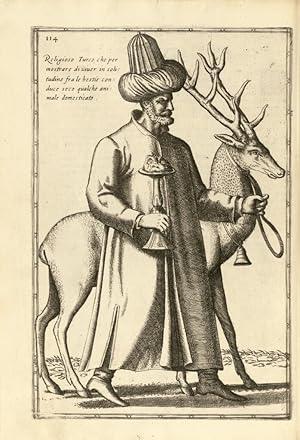
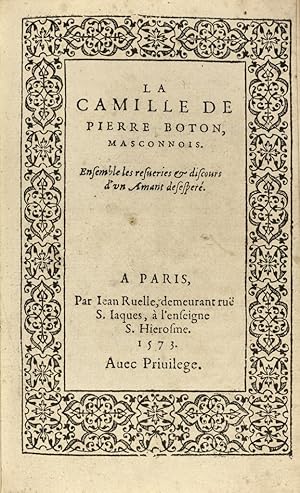


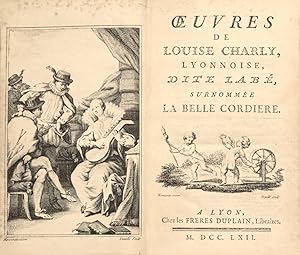
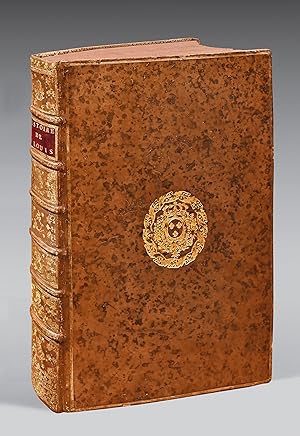

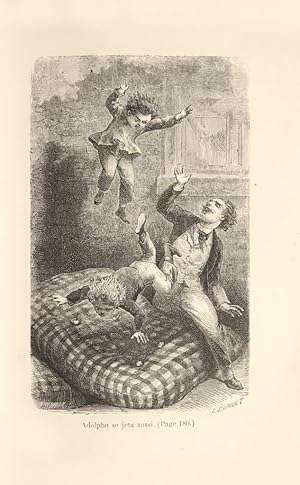

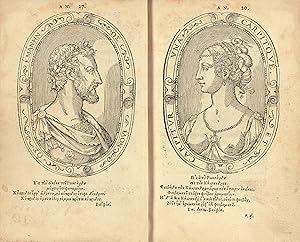
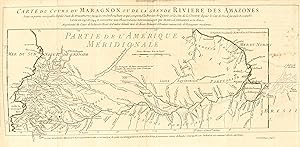
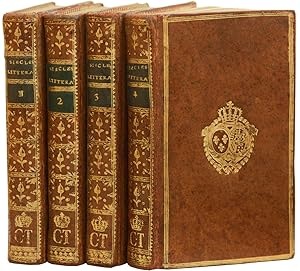
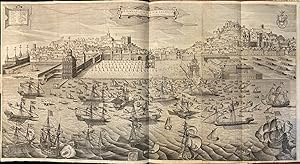
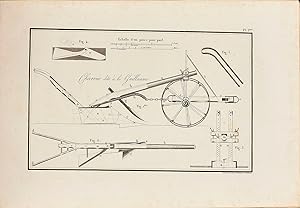
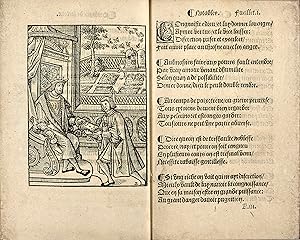

![Image du vendeur pour La première [et seconde] partie des desseins artificiaulx de toutes sortes des moulins à vent, à l'eau, a Cheval & à la main, avec diverses sortes des pompes & aultres inventions, pour faire monter l'eau au hault, sans beaucoup de peine & despens, jamais veux par cy devant. Faits et mis tracez tant pour l'exercice des amateurs de telles sciences, que pour le bien de ceulx, qui ou en temps de guerre ou de paix en auroint à faire. Par feu le tres noble seigneur lacques de Strada a Rosberg, Bourgeois Romain, Antiquaire & Commissaire de guerre des Emppp. Ferdinand, Maximilian & Rodolphe II. Maintenant mis en lumière & publiéz par Octave de Strada a Rosberg. Bourgeois Romain, Nepueu & heritier unique du dit Seigneur. mis en vente par Librairie Camille Sourget](https://pictures.abebooks.com/inventory/md/md31817655609.jpg)

